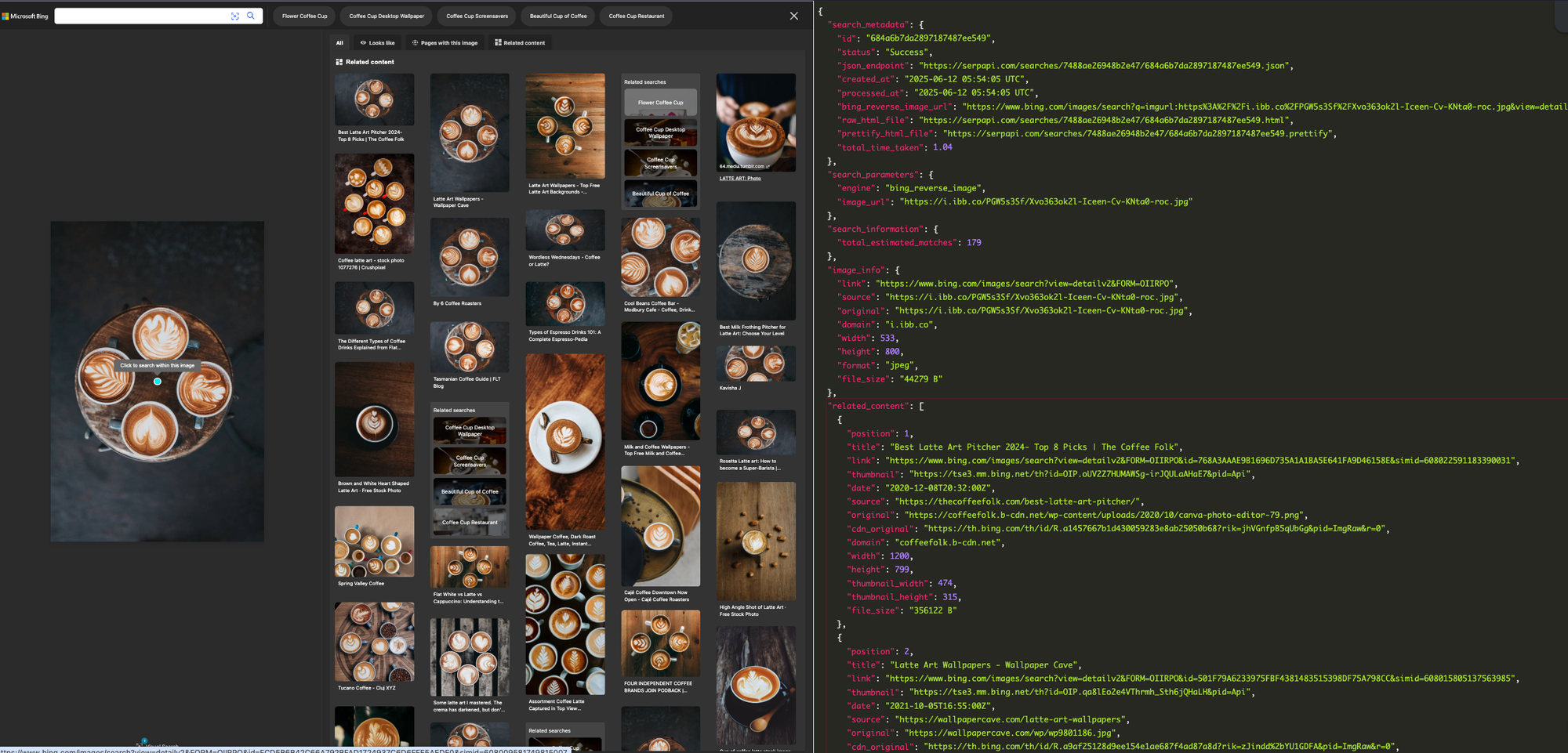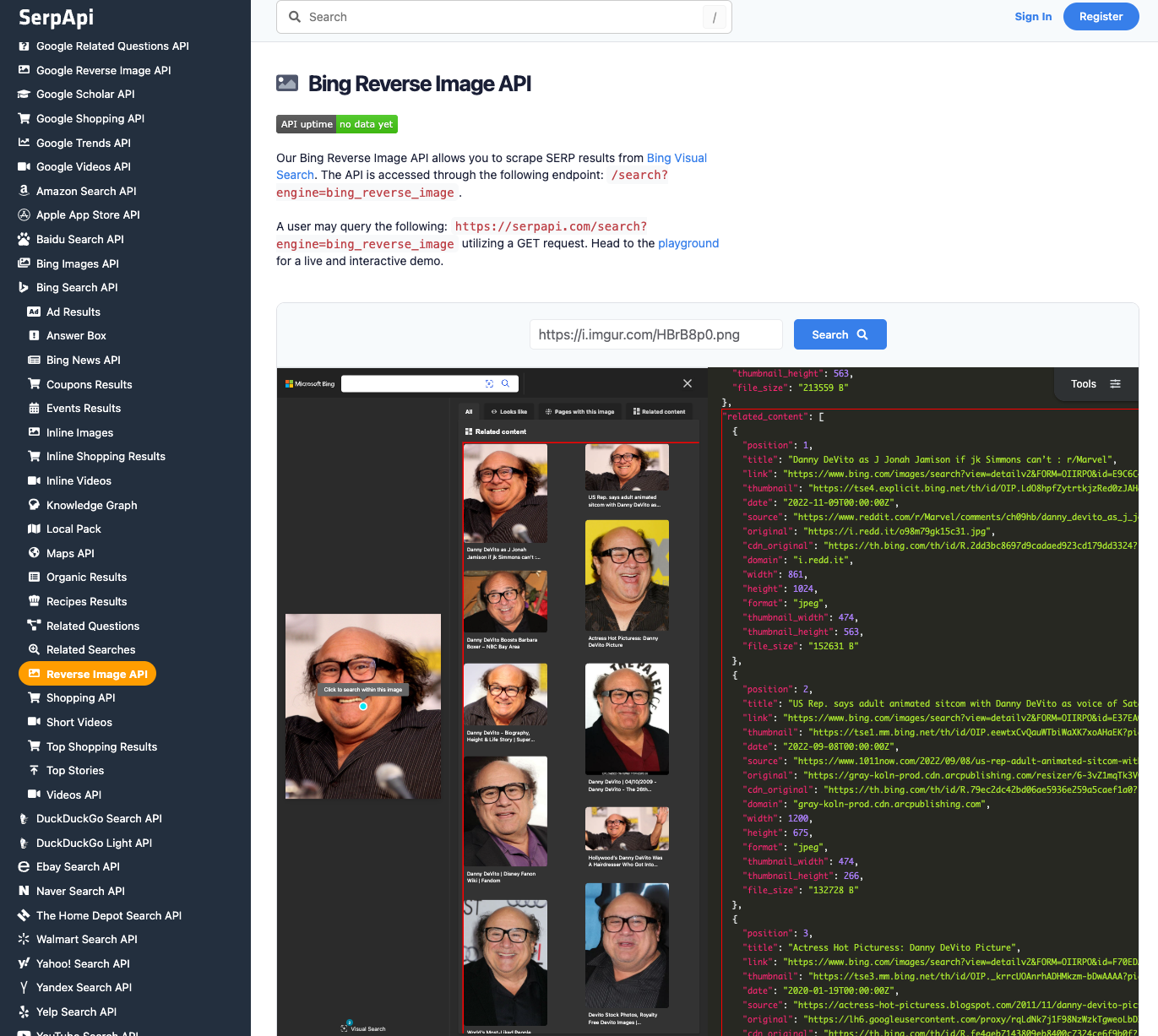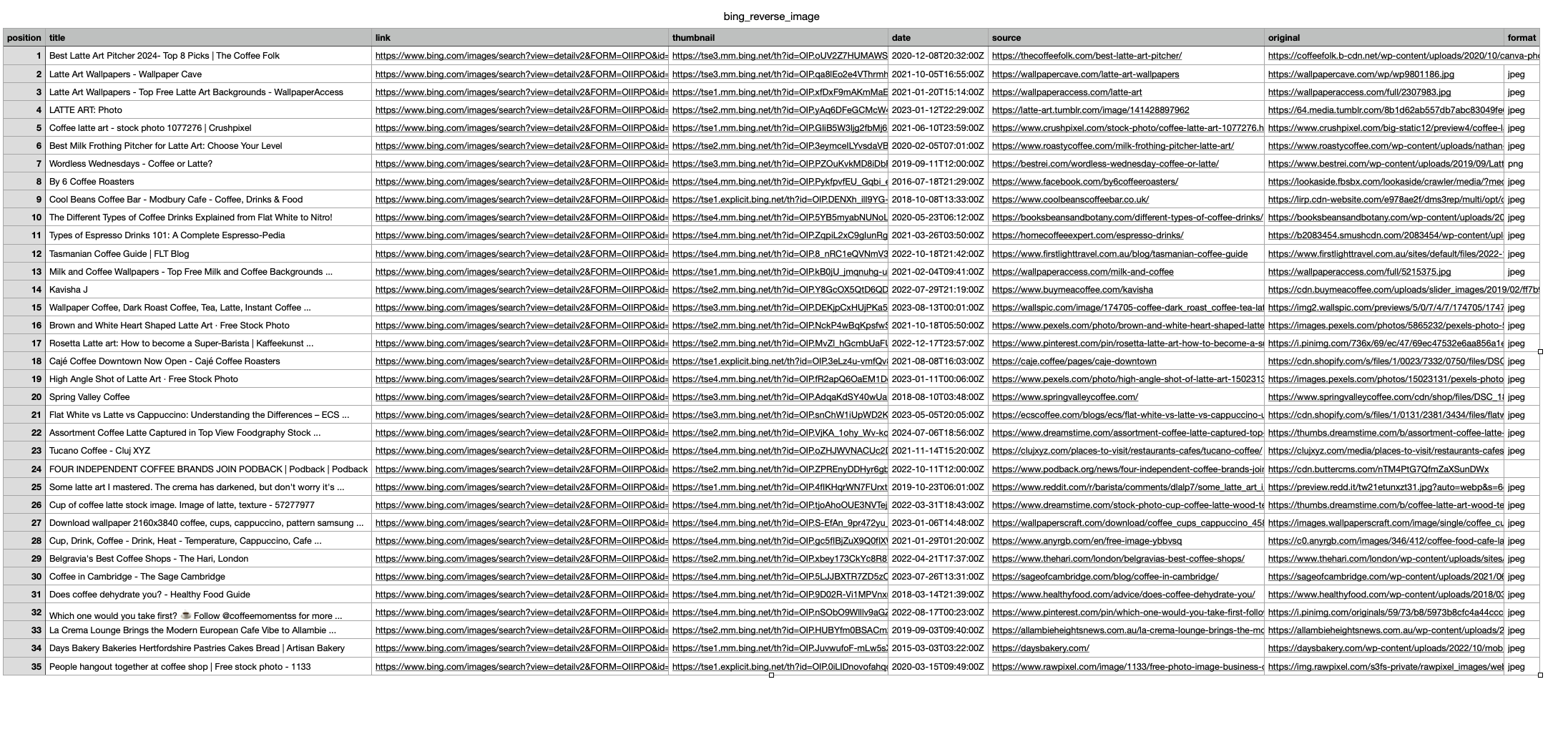In previous blog posts, we scraped similar images with Google and Yandex. In this blog post, I'm happy to guide you to scrape similar images with Bing Reverse Image API.
Bing Visual Search allows users to upload images or paste image URL into the search bar to find more information about them. In addition to similar content across the web, Bing can return more useful information, such as object recognition, people recognition, etc.
Like Google and Yandex results, Bing Reverse Image results are valuable to your business. You can scrape this data to analyze trends and track the popularity of images. You can also learn how your images are being used and referenced across the web.
Artists, photographers may scrape images to track the visibility of their works online or identify unauthorized use or copyright infringements. AI is eating the world and you can scrape a lot of images to feed into your AI applications.
SerpApi can scrape all this data from Bing Visual Search with our Bing Reverse Image API . Like the Google and Yandex APIs, the Bing Reverse Image API is very easy to use.

Setting Up a SerpApi Account
SerpApi offers a free plan for newly created accounts. Head to the sign-up page to register an account and complete your first search with our interactive playground. When you want to do more searches with us, please visit the pricing page.
Once you are familiar with all the results, you can utilize SERP APIs using your API Key.

Let's search for coffee art ideas. Let's start with this image:

We will find all similar images with results: "position", "title", "link", "thumbnail", "date", "source", "original", "format" and more. You can also scrape more information with SerpApi.
First, you need to install the SerpApi client library.
pip install google-search-resultsSet up the SerpApi credentials and search.
from serpapi import GoogleSearch
import os, json, csv
params = {
'api_key': 'YOUR_API_KEY', # your serpapi api
'engine': 'bing_reverse_image', # SerpApi search engine
'image_url': 'https://i.ibb.co/PGW5s3Sf/Xvo363ok2l-Iceen-Cv-KNta0-roc.jpg'
}
To retrieve Bing Reverse Image Results for a given image url, you can use the following code:
results = GoogleSearch(params).get_dict()['related_content']
You can store Bing Reverse Image Results JSON data in databases or export them to a CSV file.
import csv
header = [ "position", "title", "link", "thumbnail", "date", "source", "original", "format"]
with open("bing_reverse_image.csv", "w", encoding="UTF8", newline="") as f:
writer = csv.writer(f)
writer.writerow(header)
for item in results:
writer.writerow([item.get('position'), item.get('title'), item.get('link'), item.get('thumbnail'), item.get('date'), item.get('source'), item.get('original'), item.get('format')])
This example is using Python, but you can also use all your favorite programming languages like Ruby, NodeJS, Java, PHP, and more.
If you have any questions, please feel free to contact me.
